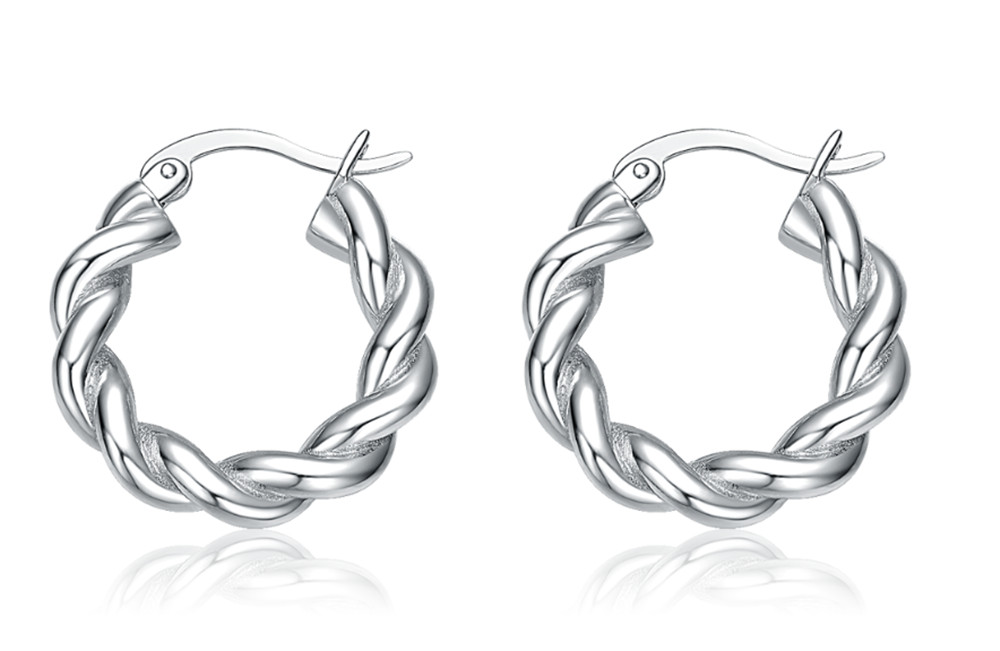Pure Silver vs 925 Sterling Silver: What’s the Difference?
Are you in the market for some new jewelry but wondering whether to go for pure silver or the 925 sterling silver? It can be a tough decision, especially if you don’t know the differences between the two. Pure silver and sterling silver may sound like they’re the same, but they have some significant differences in terms of durability, cost, and appearance.

What is Pure Silver?
Pure Silver has a higher silver content than Sterling Silver. It is 99.9% silver with 1% trace elements. It is more expensive due to the higher silver content, it’s very soft and not really suitable for jewelry.
What is sterling silver?
Sterling silver is 92.5% silver and 7.5% other metals. This 7.5% is usually made of copper and zinc.
The addition of copper to the silver provides additional strength and durability, making it more stable and easier to work with than pure silver. As a result, many of the silver jewelry items available for purchase in the market are crafted from sterling silver.
What does 925 mean?
925 means that the metal we use has 92.5% pure silver and 7.5% other metals: copper and zinc. This means that the metal is more durable to wear than pure silver which is very soft and malleable. The copper and zinc make the silver harder making it more robust and better for jewellery.
The copper and zinc are the metal elements that can cause tarnishing, this is easily sorted with a jewellery cleaning cloth to bring your pieces back to life. Underneath the tarnish the silver will be just as beautiful as it ever was.
The strict standard for Sterling Silver was established in the 1300’s in USA and made popular by Tiffany & Co in the 1900s. Sterling Silver is idea for jewellery making.
Always ask what the silver content is so you know what you are buying.
Why Choose Sterling Silver Instead of Pure Silver?
There are a few benefits to sterling silver that might push you to purchase sterling silver items over pure silver.
Cost – When it comes to silver, purity is directly proportional to cost. Real silver, which has a higher purity than sterling silver, is generally more expensive. However, silver 925 is a popular alternative due to its relative affordability. Despite being less pure than real silver, silver 925 retains its beauty and lustrous appearance. Therefore, it is an excellent choice for those seeking an affordable option.
Durability Factor – The added metal alloys in sterling silver makes it significantly stronger and more durable compared to fine silver. This durability ensures that jewelry pieces made from sterling silver can last longer while retaining their design and appeal. Copper is the most commonly chosen metal for creating the alloys used in sterling silver. It offers excellent durability, stability, and longevity, making it a reliable option for creating high-quality sterling silver pieces.
Easier to shape – The design complexity of a piece of jewelry can significantly increase its value. Pure silver is known for being soft and malleable, whereas sterling silver (also known as 925 silver) is much stronger and more pliable. This makes it easier to create intricate and unique designs with 925 silver jewelry. Furthermore, sterling silver is easier to resize, repair, and polish compared to other types of jewelry. And when scratches or scuffs appear, sterling silver can be easily restored to its original luster.
How to Care for Your Pure Silver and Sterling Silver Items
You can make both pure silver and sterling silver items last a lot longer by taking a few simple precautions.
For pure silver, you need to be extra careful with it. Since it isn't very durable and it's soft, you need to make sure not to overuse fine silver items or use them too roughly.
For both pure and sterling silver, store it in a dark place away from air and water exposure. You can also clean your silver items with anti-tarnish liquids and a soft cloth.

